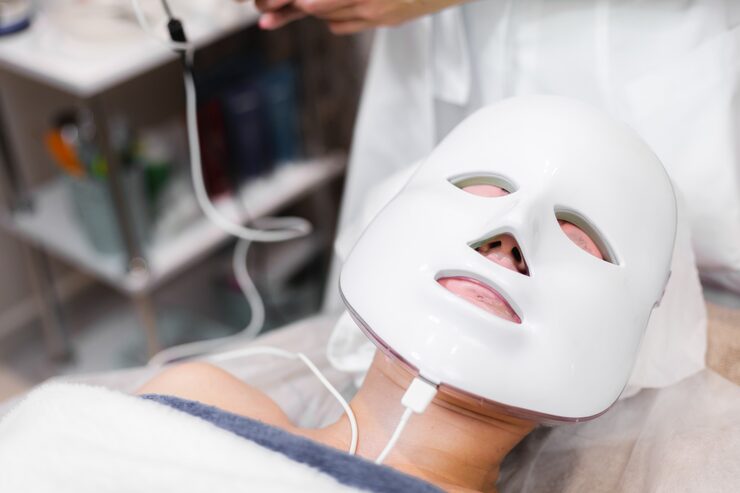Cryotherapy is becoming a popular weight-loss trend, promising fat reduction and a metabolism boost. Picture stepping into a chamber chilled to around -130°C and walking out with the chance to lose stubborn fat. Once limited to upscale clinics, cryotherapy is now more widely available, even for home use.
But does cryotherapy actually help with weight loss? In short: yes — but it’s not a miracle cure. It works best alongside healthy habits. Here’s how cryotherapy works and what it can do for your weight-loss efforts.
What is cryotherapy for weight loss?
For weight loss, cryotherapy means exposing the body to very cold temperatures to trigger responses that may help reduce fat. This can be whole-body cryotherapy, where you enter a chamber cooled to -100°C or lower, or localized treatments that focus on a specific area, like the belly, by cooling the skin and underlying fat cells.
The idea is that extreme cold ramps up your metabolism, burns calories, and activates brown fat — a type of fat that produces heat and burns energy when you’re cold. Targeted treatments like cryolipolysis, or “fat freezing,” can also destroy fat cells in specific areas without surgery. Cryotherapy isn’t just about the cold itself; it’s about using the body’s natural responses to cold exposure to support fat loss.

How effective is it?
Cryotherapy comes in different forms, with varied results for weight loss. Here’s what to expect from each type:
Whole-body cryotherapy (WBC)
WBC involves standing in a chamber where the air can be as cold as -140°C for 2–5 minutes. Athletes use it for recovery, and it’s also used to help with weight loss because it can boost metabolism and reduce inflammation.
Research on menopausal women with metabolic syndrome found that 20 sessions of WBC — daily 3-minute exposures at about -130°C — led to smaller waists, lower body fat percentage, and reduced abdominal fat. Other studies also point to improved recovery, less inflammation, and gradual fat reduction when WBC is used consistently over several weeks.
This suggests WBC isn’t an instant fix but can help reduce stubborn fat when used regularly and combined with a healthy diet and exercise.
Localized cryotherapy (cryolipolysis)
Cryolipolysis, or “fat freezing,” targets areas like the belly or thighs with devices that cool and break down fat cells while leaving nearby tissue unharmed. This noninvasive method is effective for spot reduction, especially for fat that doesn’t respond to diet and exercise.
Studies show a typical 10–25% reduction in fat thickness within two to four months. Some research found that a single session can reduce both subcutaneous (under the skin) and visceral (around organs) belly fat within about 12 weeks. Cryolipolysis works by triggering the body to clear away the damaged fat cells over time.
For people dealing with localized fat deposits, cryolipolysis is a strong non-surgical option to improve body contours when paired with a healthy lifestyle.
Cryofrequency
Cryofrequency combines radiofrequency with cold to reach deeper fat layers while tightening the skin. This dual action can improve fat loss and skin tone, making it popular for more complete aesthetic results. Studies show cryofrequency can reduce fat and firm skin, especially when combined with other technologies like ultracavitation. Many participants notice improvements after only a few sessions.
Traditional cold exposure
Traditional cold methods — cold showers, ice baths, and simply spending time in cold weather — can slightly boost metabolism by activating brown fat and increasing calorie burn. However, their impact is much smaller than professional cryotherapy. These approaches can support weight loss and overall well-being, but they won’t deliver targeted fat loss like cryolipolysis or the stronger effects of whole-body cryotherapy.
How does cryotherapy help you lose weight?
Cryotherapy may aid weight loss through several mechanisms, though more research is needed:
– Activation of brown fat: Brown fat burns calories to produce heat when you’re cold, increasing energy use in a process called thermogenesis.
– Thermogenesis: Extreme cold forces your body to work to keep its core temperature stable, which raises calorie burn. This rewarming effect can continue burning energy for hours after exposure.
– Increased metabolism: Cold exposure can raise resting metabolic rate, so your body burns more calories at rest. This supports weight loss when combined with diet and exercise.
These mechanisms are promising, but the long-term effects and best ways to use cryotherapy for weight loss still need more study.
Cryotherapy at home: what you can try
If you can’t access professional cryotherapy, you can try cold showers, ice baths, or spending time in cool environments to get a small metabolic boost. While these won’t match professional treatments, they can help burn a few extra calories.
For better results, combine at-home cold exposure with regular exercise and a balanced diet. Simple steps like lowering the thermostat or wearing lighter clothing indoors can increase your exposure to cold. Some people buy home cryotherapy chambers, but these are expensive and come with more risks.
Side effects and safety
Cryotherapy generally causes fewer side effects than surgical fat-reduction methods, but mild effects can occur. Common reactions include temporary redness, tingling, numbness, or mild discomfort in the treated area; these usually go away on their own.
Always follow professional guidance and ensure treatments are done correctly to minimize complications. Talk to a certified practitioner before trying cryotherapy to reduce risks and get the best results.
Wrapping up
Cryotherapy offers a fresh way to support weight loss by using extreme cold to boost metabolism, target stubborn fat, and complement other efforts. It isn’t a quick fix, but when combined with healthy eating and exercise, it can help. Consistency and realistic expectations are key: results take time.
Whether you try a cryo chamber, localized fat freezing, or simple cold exposure at home, cryotherapy can be a useful tool in your weight-loss plan when used carefully and safely.